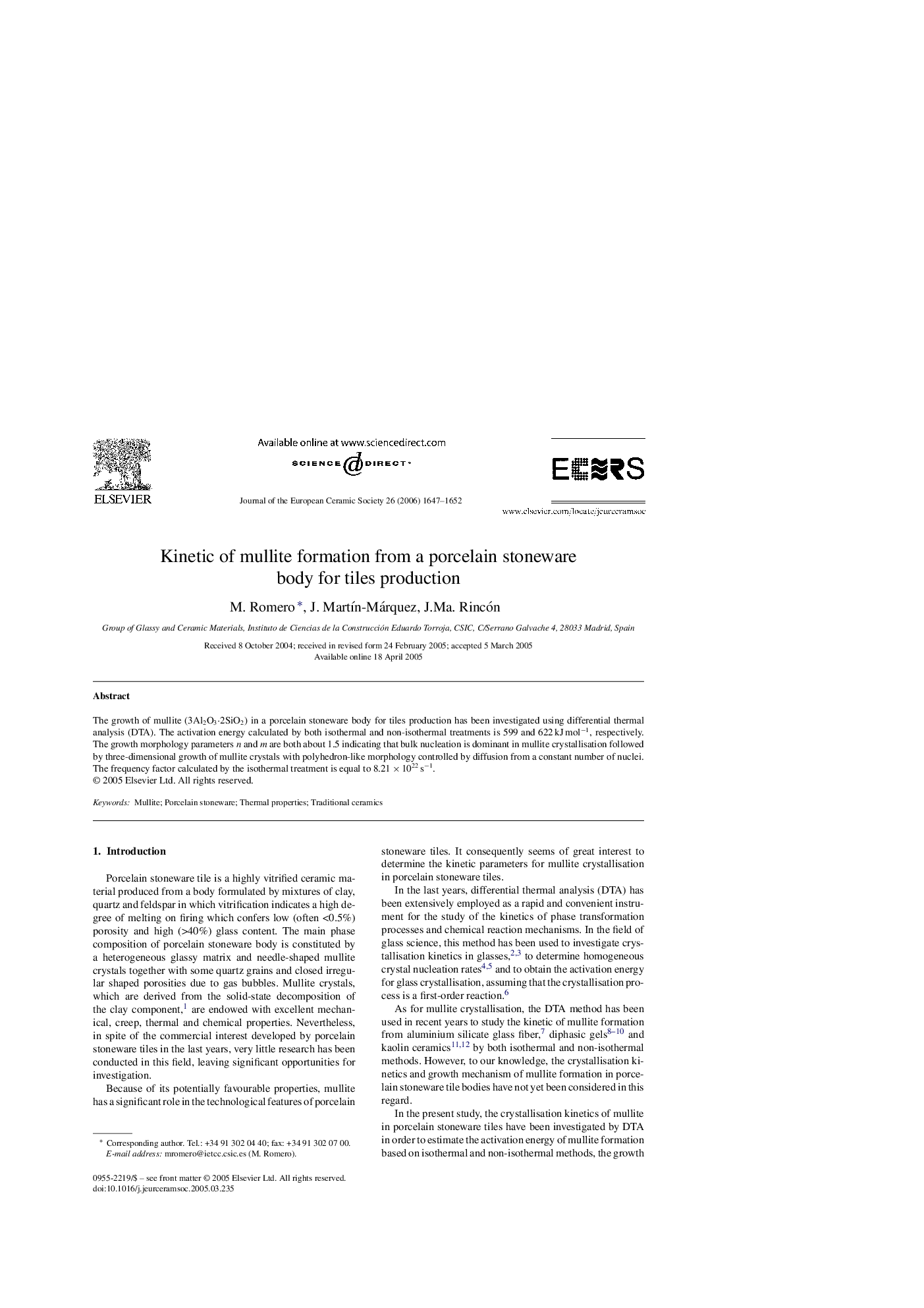| Article ID | Journal | Published Year | Pages | File Type |
|---|---|---|---|---|
| 1478491 | Journal of the European Ceramic Society | 2006 | 6 Pages |
Abstract
The growth of mullite (3Al2O3·2SiO2) in a porcelain stoneware body for tiles production has been investigated using differential thermal analysis (DTA). The activation energy calculated by both isothermal and non-isothermal treatments is 599 and 622 kJ mol−1, respectively. The growth morphology parameters n and m are both about 1.5 indicating that bulk nucleation is dominant in mullite crystallisation followed by three-dimensional growth of mullite crystals with polyhedron-like morphology controlled by diffusion from a constant number of nuclei. The frequency factor calculated by the isothermal treatment is equal to 8.21 × 1022 s−1.
Related Topics
Physical Sciences and Engineering
Materials Science
Ceramics and Composites
Authors
M. Romero, J. Martín-Márquez, J.Ma. Rincón,
